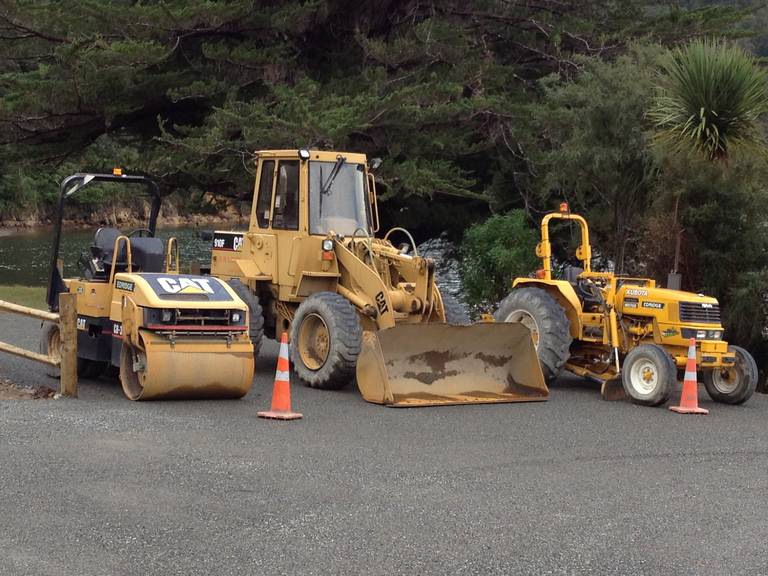Fibre
If you have this option, take it over anything below.
It is fast, reliable and reasonably priced.
VDSL
This is copper cable but usually fast.
Average rural VDSL speed has been measured at 50Mps by ComCom
Even the slowest VDSL connections should provide a good level of service
Common faults
- In home setup
- Copper cable faults
WISP (Wireless Internet Service Provider)
These are smaller businesses that are often very good at providing reasonably priced usable solutions in hard to reach areas of New Zealand. This is NOT fixed-line NOR cellular.
Many WISPs offer performance comparable with VDSL. There may be an option you add your phone via VOIP (Voice Over Internet) service.
The repeater equipment to reach you is typically solar-powered.
You can find your local WISP here or here
Common Faults
- Trees growing and blocking the signal
- In home setup
Starlink
Starlink are launching thousands of low orbit satellites that are providing the next generation of satellite broadband.
You can order at Starlink.com
The costs are (in NZD incl. GST):
- Hardware $913 (inc shipping)
- Service $159/month
Performance is at least as good as VDSL or basic fibre.
Advantages over traditional satellite internet:
- Lower cost
- Easy self install (the dish is small and is motorised for self alignment)
- Fast ~100 to 300Mb/s
- Presently no data caps
- Low latency (or lag)
- The satellites are much closer (eg 600km vs 39000km)
- The new technology will still have a few wrinkles
Cellular Fixed-Wireless
Typically operated and provided by Vodafone & Spark. Prone to capacity issues as the equipment involved in reaching you requires investment to increase capacity, which may not be commercially viable to the operators. A challenge for Operators delivering a usable solution to rural NZ is the sites require mains power.
Consider an external antenna if your signal is poor. Enquire with your provider about Rural Wireless Antenna bundles.
The monthly data quota may be limiting for some people (typically 120 – 200GB). (Unlimited rural wireless internet is uncommon.)
(VDSL typically gives a more consistent performance because it is less prone to congestion than cellular).
Common Faults
- Performance can be sporadic due to congestion/capacity
- In home setup
- An external antenna may give better performance
ADSL
The only option in some areas. Reasonably priced. The performance is good for most connections, but the worst ones can be very slow.
The bar is set very low for ADSL speed. The Government specifies a minimum speed of 0.032Mbps. An average urban ADSL connection is almost 300 times faster at 9Mbps.
As small percentage (approx. 6%) of connections suffer from severe overloading (and/or ineffective traffic management )
Common Faults
- Other devices using the internet in the house may affect your speed. Eg a Windows update download may adversely affect everyone.
- Copper cable faults. Log a (likely intermittent) fault with your provider.
- Voice quality may be poor if you use VOIP (Voice over internet)
- Poor performance due to congestion in the network (affects only a small fraction of lines)
- In home setup
Mobile Data
This is using a mobile (or modem) with a data plan. A major is advantage is that it can be used in areas where operators refuse new cellular fixed-wireless connections (due to capacity or signal strength issues). Can be expensive, but there are some deals to be had. Consider checking out some of the smaller resellers.
Most of the mobile providers offer plans with “Endless Data”. This plan gives you a monthly full speed quota (e.g. 40GB). Once you exceed the quota your max speed drops to 1.2 or 1 Mbps.
If required, we can provide more details on mobile data solutions eg hotspotting, external antennas, 4G modems
Satellite
Consistent performance, available almost everywhere but expensive. Less suitable for business applications such as online meetings and remote desktop applications as there is a slight delay from signal round trip to Satellite.
NOTE: In 2021 LEO (low earth orbit) satellite technology is expected to arrive in NZ. This will improve performance for business applications and MAY drive the cost of accessing this technology down.
Common Faults
- In home setup
- Heavy rain may temporarily interrupt service (rain fade). Those with satellite TV will be familiar with this.
